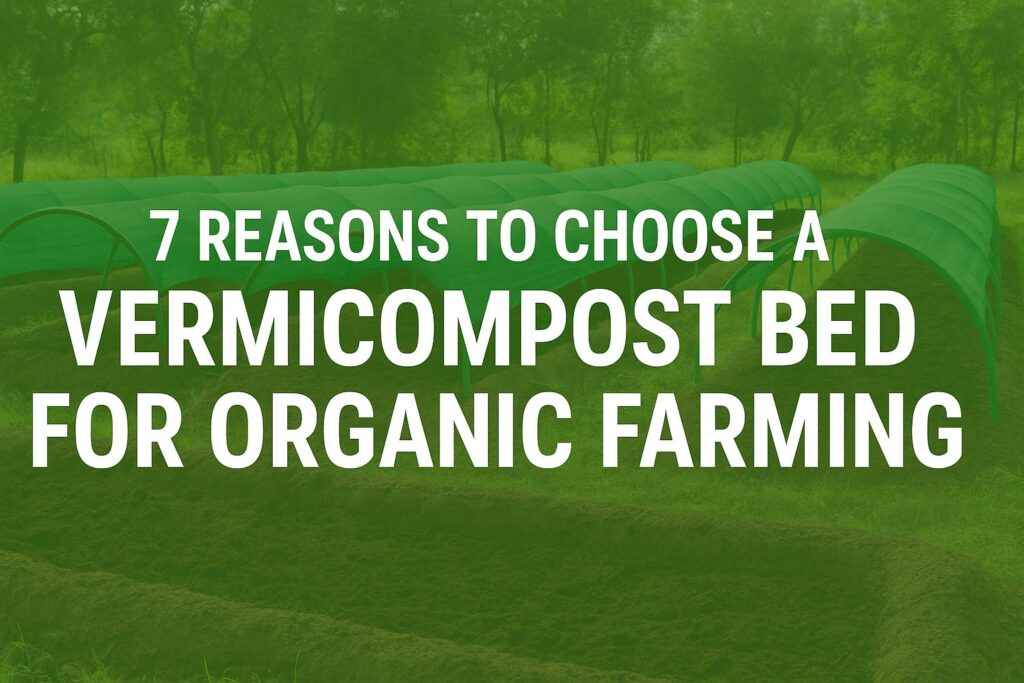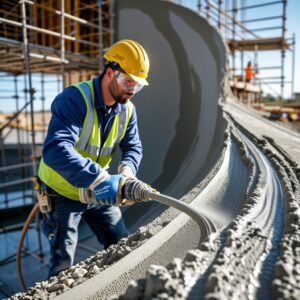
Organic farming thrives on balance—between soil, biology, and sustainability. One of the most effective tools to maintain that balance is the vermicompost bed. It’s not just a composting method; it’s a living system that transforms farm waste into nutrient-rich organic matter using earthworms. Whether you’re running a small farm or a large organic enterprise, vermicompost beds can redefine how you manage soil health, crop productivity, and long-term sustainability.
From lowering input costs to restoring microbial life in the soil, vermicomposting offers a scalable and chemical-free approach to farming that benefits both crops and ecosystems.
Reason 1: Accelerates Organic Waste Breakdown
Vermicompost beds dramatically speed up the decomposition process. Traditional compost piles can take 4–6 months to mature, especially when not properly aerated or temperature-managed. In contrast, a well-maintained vermibed can convert organic waste into usable compost in as little as 30–45 days.
This is possible due to the biological action of earthworms like Eisenia fetida, which:
- Consume organic material and excrete nutrient-rich castings
- Improve the aeration and microbial diversity of the decomposing material
These castings are not just faster to produce—they contain five times more nitrogen, seven times more phosphorus, and 11 times more potassium than ordinary soil.
Reason 2: Produces High-Quality Compost Naturally
The output from a vermicompost bed isn’t just any compost—it’s a biologically active, fine-textured substance rich in macro and micronutrients. The process enhances the humus content and increases the availability of trace minerals, making it ideal for organic certification and chemical-free cultivation.
According to the Food and Agriculture Organization (FAO), vermicompost improves plant growth by enhancing enzyme activities, microbial biomass, and root development. Plants grown with vermicompost show better disease resistance, increased flowering, and faster maturation cycles.
In a controlled test, tomato crops fertilized with vermicompost produced 23% more yield than those using traditional compost.
Reason 3: Low-Cost, Low-Tech, High-Impact
One of the major advantages of vermicompost beds is their simplicity. A basic setup requires no electricity, minimal labor, and almost zero maintenance. Once established, the system runs on biodegradable farm waste—crop residue, cow dung, vegetable waste—which reduces dependency on commercial fertilizers.
With rising input costs and climate challenges, many farmers opt to buy vermicompost bed systems that are prefabricated, durable, and suited for various climates. These ready-to-use beds reduce setup time and make it easier to scale operations without heavy capital investment.
- Prefab beds use UV-stabilized fabric for durability in hot and wet climates
- Modular design allows for easy expansion or relocation of composting zones
This makes vermicomposting accessible to smallholders and backyard growers who want to adopt sustainable methods without overhauling their entire farm infrastructure.
Reason 4: Enhances Soil Structure and Microbial Life
Healthy soil isn’t just dirt—it’s a living ecosystem. Vermicompost introduces a dense microbial population into the soil, improving aggregation, nutrient cycling, and root penetration.
The compost works by:
- Boosting populations of beneficial fungi and bacteria
- Increasing cation exchange capacity, improving nutrient retention
Over time, soil amended with vermicompost becomes loamy, more porous, and better at holding moisture. In dry climates, this means crops can access water for longer periods between irrigation cycles.
“You don’t feed the plant—you feed the soil. The soil feeds the plant.”
Reason 5: Reduces Dependence on Chemical Inputs
You may drastically cut back on the usage of synthetic fertiliser and pesticides by incorporating vermicompost into your fertilisation plan. Vermicompost’s inherent ability to suppress disease makes it a hostile habitat for pathogens and soil-borne pests.
According to a Rodale Institute study, fields treated with vermicompost saw a 25–50% reduction in the requirement for nitrogen-based fertilisers. Furthermore, crops receive a consistent supply of nutrients free from nutrient spikes that could cause leaching when bioavailable nutrients are present.
Farmers practicing integrated nutrient management often rotate between compost, vermicompost, and green manure—reducing their dependency on costly chemical solutions and lowering long-term soil degradation risks.
Reason 6: Sustainable Waste Management Solution
Whether it’s food leftovers, livestock manure, or crop residue, organic waste is produced on every farm. This garbage can be treated on-site using vermicompost beds, converting a possible contaminant into a useful resource.
This closed-loop system:
- Prevents methane emissions from waste piles
- Reduces the need for external waste transport and landfill disposal
Vermicompost beds contribute to the development of circular farming economies by reintegrating waste into the agricultural system. This is especially important in areas where burning dung or open dumping is prohibited, as there is an immediate need for other waste management techniques.
Reason 7: Versatile Across Farm Sizes and Models
Vermicompost beds are not limited to huge farms or rural areas. These systems can also be used for greenhouse operations, school gardens, rooftop farms, and urban gardens. Even indoor agriculture setups can use mini vermibeds for compost formation because of their small footprint and odourless nature.
The modular nature of vermibeds means:
- Systems can be expanded with seasonal demand or scaled down in lean periods
- They can operate in both tropical and temperate climates with minor modifications
This flexibility is valuable for farmers shifting to regenerative practices or those engaged in high-value crops like herbs, florals, or organic vegetables that require enriched soils.
FAQs
-
How often should I harvest compost from the vermibed?
Harvest every 30–45 days, depending on feedstock and worm activity. Signs include a dark, earthy smell and granular texture.
-
Do I need to replace the worms periodically?
No. Earthworms reproduce naturally in the bed. If the environment remains moist, aerated, and has a steady food supply, they self-regulate.
-
Can vermicompost beds handle all types of organic waste?
Avoid citrus peels, oily food, and meat scraps. Focus on cow dung, vegetable waste, and green leaves for optimal results.
-
Are prefabricated vermibeds better than brick-pit systems?
Prefabricated beds are portable, UV-resistant, and easier to maintain. Brick-pit systems are fixed and require more initial labor but offer insulation benefits in colder regions.
-
What is the ideal moisture content inside a vermibed?
Keep moisture between 60–70%. Too dry and worms die; too wet and the system becomes anaerobic. Squeeze test: the compost should feel like a wrung-out sponge.
What to Try Next
For optimal nutrient delivery, investigate multi-layered composting using vertical worm towers or incorporate vermicompost leachate into drip irrigation systems. We’ll discuss ways to improve organic fertility programmes by combining vermicompost with biochar, neem cake, and microbial consortia in future articles.



